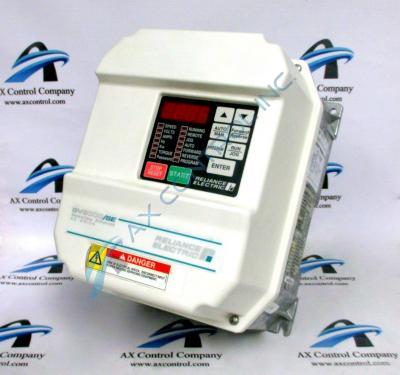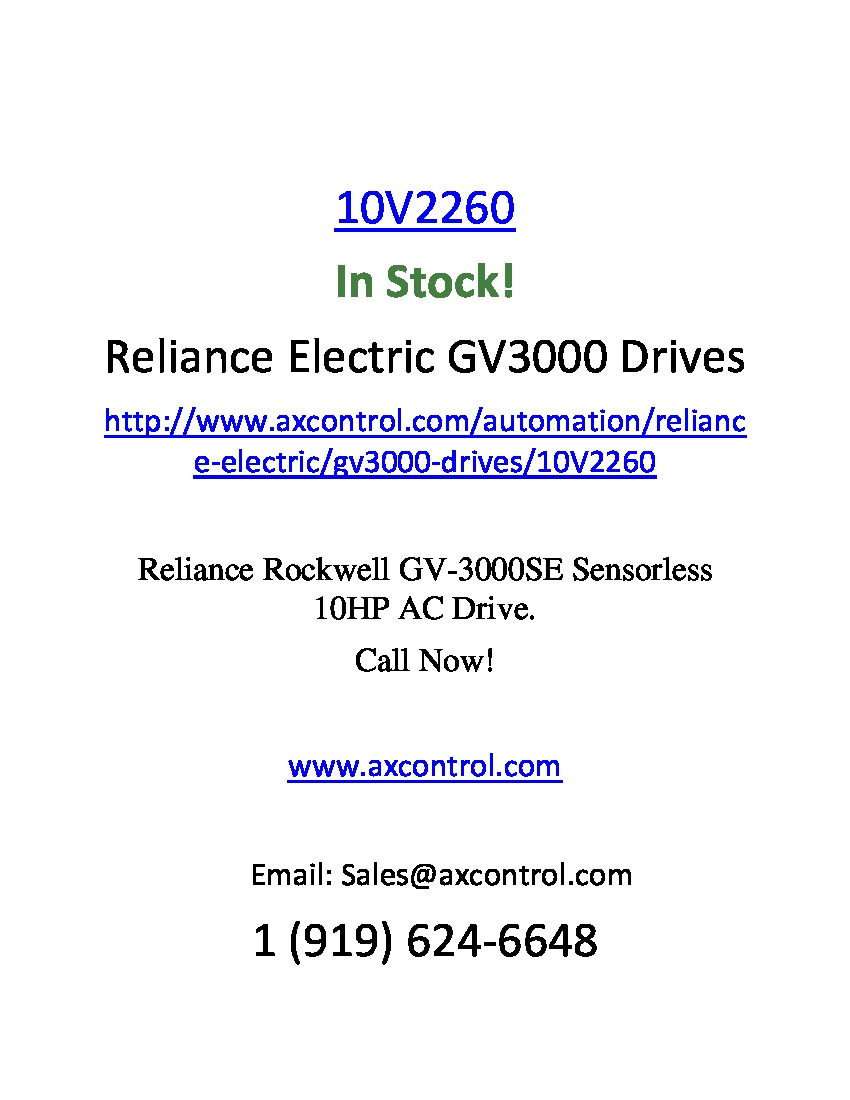About the 2V2460
Produced by Reliance Electric, the 2V2460 is a 2 horsepower, 3.3KVA pulse-width modulated drive. The drive is designed to drive induction motors at various speeds, all within the safety of a protective enclosure that is hardened against harsh conditions in the operating environment. The drive provides both general purpose and vector regulation for motors. By employing vector regulation, the drive is capable of precisely controlling motor speed in both directions, maintaining full rated motor torque to zero speed, and providing high dynamic response.
The NEMA enclosure rating is 4X/12, which means that the chassis for this particular unit is not vented. This contrasts with the NEMA 1 and NEMA 1A chassises that some of the other relays in the series possess, which are normally vented (NEMA 1) or ventilated with fan and filter (NEMA 1A). The NEMA 4X/12 rated chassis does come with keypad and base gaskets. Overall, the case is meant for use in indoor environments that necessitate a dust-tight and water-tight enclosure.
Unfortunately, the NEMA 4x or NEMA 12-type enclosure that consistently protects the 2V2460 drive is also a major mitigator of common drive function faults. One fault that owners of this GV3000 series drive have come to fear is the earth current failure fault, indicated on the drive's built-in keypad display by the simple code EC. This earth current failure fault is typically attributed to an unintentional grounding of the drive's output, and corrective action for this fault would be to check for proper isolation between the ground and output terminals. If the problem is determined to be not with the ground and output terminals, additional drive inspection for possible leakage and current sensor defects may be necessary. For additional drive programming and fault code information, please access the Reliance Electric Software Start-Up and Reference Manual D2-3359-6.
The 2V2460 features a variety of key internal components, such as a PISC board, a regulator, a fan assembly system, and a GVPB board. It includes a built-in keypad that has a bracket attached to it to make appropriate connections to the regulator board.












